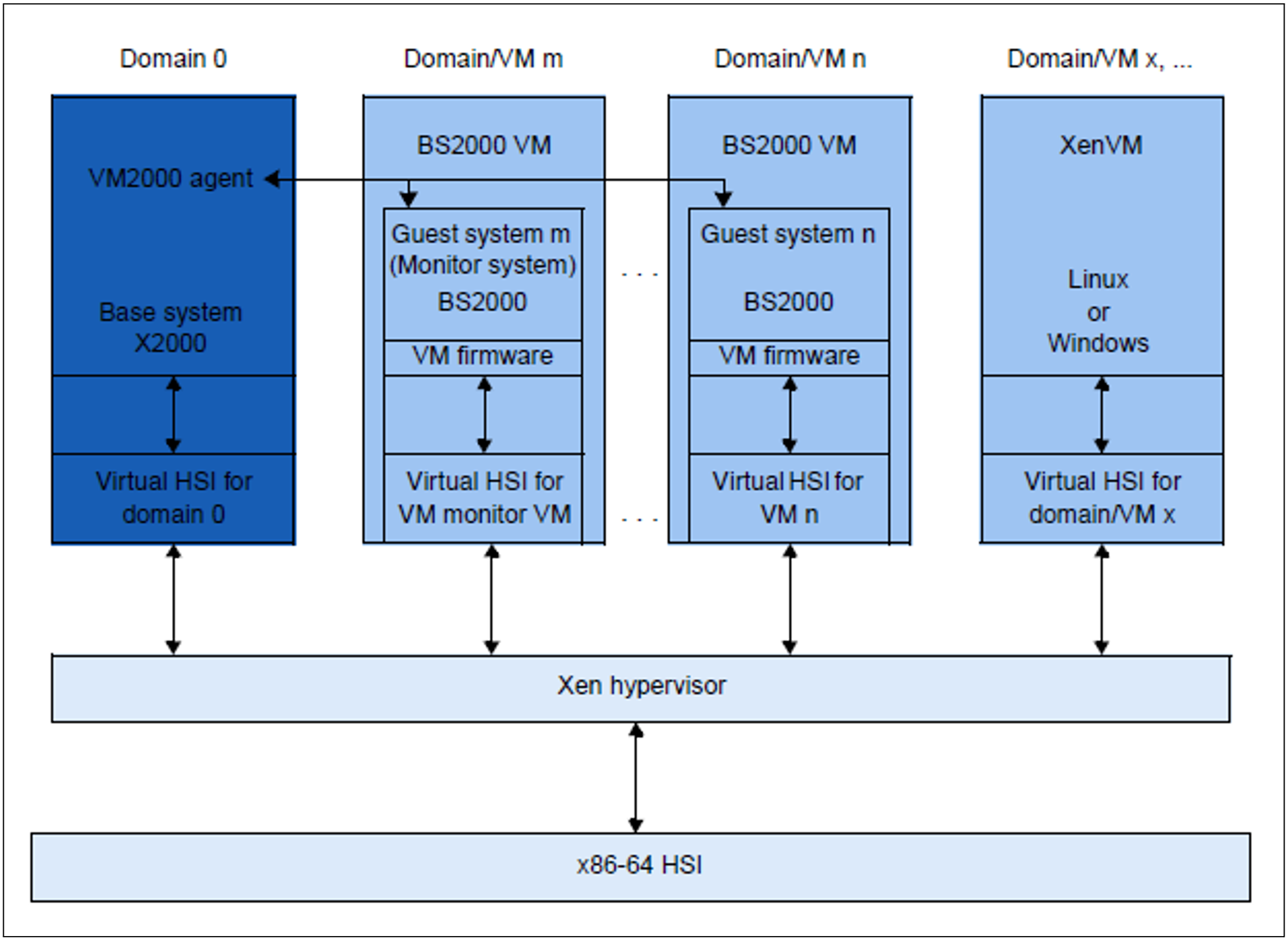Depending on the architecture of the Server Unit there are two fundamentally different technical implementations of VM2000.
Implementation principle for SU /390
On SU /390 VM2000 controls the hardware of the Server Unit.
The VM2000 monitor manages all VMs and provides its functions via the VM2000 interface.
The VM2000 hypervisor controls execution of all guest systems on the VMs. Differentiated scheduling mechanisms ensure optimum execution of the guest systems.
Figure 8: Structure of VM2000 on SU /390
In this case, HSI stands for "Hardware Software Interface". Further information is provided in the "VM2000" manual [12].
Implementation principle for SU x86
On SU x86 the X2000 basic system controls the hardware of the Server Unit.
The VM2000 monitor manages the VMs with the guest system BS2000 (BS2000 VM) and provides its functions via the VM2000 user interface.
The Xen hypervisor virtualizes the global resources CPU and main memory, controls the execution of all VMs (scheduling), and ensures load balancing for CPU usage.
Figure 9: VM2000 on SU x86
Further information is provided in the "VM2000" manual [12].
Roles
Actions for the BS2000 VMs can be initiated from different roles:
Fundamental functions for VM management (including configuring BS2000 VMs), operating the BS2000 VMs, and device management are available to the administrator in the SE Manager.
The full VM2000 functional scope is available to the VM2000 and VM administrators via the interface of VM2000. The VM2000 commands operate and manage all BS2000 VMs. A detailed description of the VM2000 functional scope is contained in the "VM2000" manual [12].


